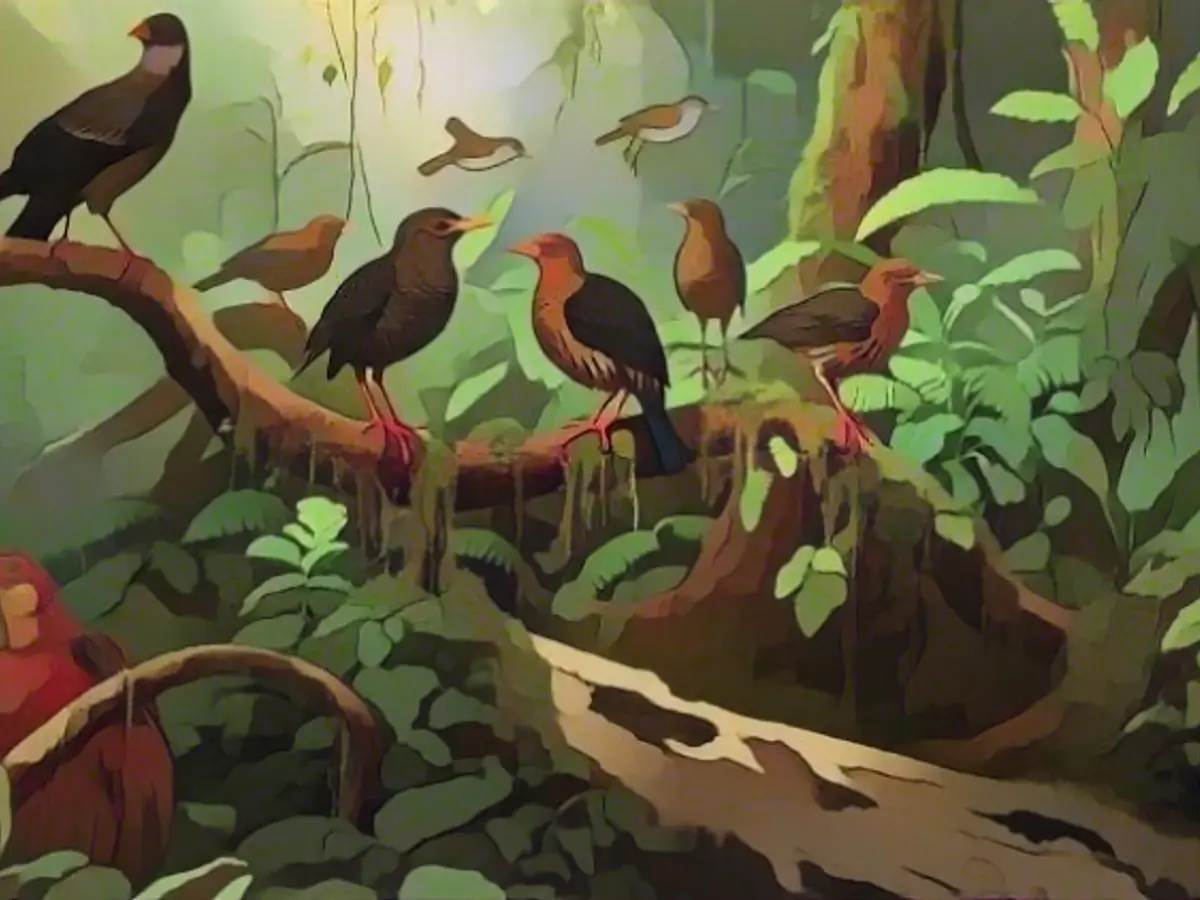This is how many bird species humans have already wiped out
The more humans spread across the earth, the more animal species disappeared - this also applies to birds. According to an international research team, bird extinctions have occurred in three major waves. We are currently in the third wave and it is affecting more regions than before.
The dodo on Mauritius, the giant auk in the North Atlantic or the St. Helena's hoopoe on the island of the same name in the South Atlantic: according to a study, mankind has wiped out around 1,400 bird species over the past millennia or at least contributed significantly to their disappearance. This corresponds to almost 12 percent of today's approximately 10,900 bird species, writes an international research team in the journal "Nature Communications". The bird extinction occurred in three major waves and mainly affected islands.
The spread of humans beyond Africa has led to the disappearance of many animals worldwide over the past tens of thousands of years. In addition to large mammals, birds were particularly affected - especially on island groups. In addition to hunting, the specific causes were primarily the destruction of habitats such as forests as well as various human bring-alongs, as the team led by Rob Cooke from the University of Gothenburg writes. Examples include dogs, rats and pigs.
It is not known how large this bird mortality actually was because many species have disappeared without a trace. Cooke's team estimated the extent of this loss by first concentrating on the lost bird world of New Zealand, which has been excellently studied and whose existence is evidenced by many fossils. The research team then compared the data with 69 archipelagos with a total of almost 1,500 islands and used it to create models of how many species of extinct birds could have remained undiscovered worldwide.
Disappearing without leaving a trace
According to the results, around 1300 to 1500 species disappeared over the millennia - 55 percent of them without leaving a trace. Of the 640 extinct species of which there are fossil finds, 90 percent are island dwellers. In contrast to species on the mainland, these have fewer places to retreat to. Most species - an estimated 61 percent - disappeared in the Pacific region.
The team names the 9th century BC as the first major wave of bird extinction. At that time, the first humans reached many islands in the Western Pacific, including the Tonga and Fiji archipelagos and the Mariana Islands. The Canary Islands were also colonized at this time. Researchers date the second, much more intense wave to the 14th century AD. At that time, people opened up many island groups in the Eastern Pacific, such as Hawaii and the Marquesas, but also the islands of New Zealand.
New threats lead to rapid decline
"The arrival of humans along with their pets (pigs, dogs, chickens) and Pacific rats, which were brought over with them, brought a change in habitat and new threats to the native bird world, which led to a rapid decline in bird species," it says. These included nine species of moas (Dinornithi), large ratites in New Zealand, the Lori parrot species Vini sinotoi in the Marquesas and the corvid Corvus impluviatus in Hawaii.
The third wave - the current bird extinction that has been ongoing since the 18th century - affects many different regions and is associated with the destruction of habitats, environmental pollution and the introduction of invasive species, the group continues.
Read also:
- This will change in December
- Fireworks and parties ring in 2024 - turn of the year overshadowed by conflicts
- Attacks on ships in the Red Sea: shipping companies avoid important trade route
- Houthi rebels want to launch further attacks despite international coalition
The alarming rate of bird extinctions necessitates increased efforts in both environmental pollution control and education. As the international research team points out, humans have contributed to the wiping out of around 1,400 bird species and their habitats, often due to the introduction of invasive species like dogs, rats, and pigs. Protecting remaining avian species, such as the endangered moas in New Zealand, requires a focused approach in species protection and habitat preservation, ensuring a healthier future for our animal kingdom.
Source: www.ntv.de







